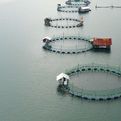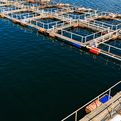Maintaining Aquatic Balance: Understanding the Temperature-Dissolved Oxygen Relationship
Dissolved oxygen (DO) stands as a critical parameter in water quality assessment, wielding immense influence over the health of aquatic ecosystems. Vital for the survival and well-being of fish, plants, and various aquatic organisms, the levels of dissolved oxygen directly impact their growth, reproduction, and overall vitality.
A fundamental aspect governing DO levels is the intricate interplay between water temperature and oxygen solubility.
Temperature-Dissolved Oxygen Relationship: Unraveling the Dynamics
The temperature-dissolved oxygen relationship is a pivotal concept defining how variations in water temperature influence the amount of oxygen dissolved in water. As water temperature ascends, the capacity of water to hold dissolved oxygen diminishes, creating an inverse relationship.
- Solubility Dynamics
- The solubility of oxygen in water is intimately linked to temperature. Warmer water exhibits a lower capacity to dissolve oxygen due to heightened molecular activity.
- As water temperature rises, the dissolved oxygen content decreases, and conversely, as it drops, the dissolved oxygen content increases.
- This dynamic relationship underscores the critical role of temperature in shaping the oxygen landscape of aquatic environments.
- Metabolic Impact
- Elevated water temperatures not only impact oxygen solubility but also trigger an escalation in the metabolism of aquatic organisms.
- As organisms become more metabolically active in warmer conditions, their demand for oxygen intensifies.
- This heightened demand synergizes with reduced oxygen solubility, leading to a consequential decrease in dissolved oxygen levels.
Implications and Threats: Thermal Stress and Ecosystem Health
The ramifications of the temperature-dissolved oxygen relationship extend to the heart of aquatic ecosystem health. Thermal stress emerges when water temperatures reach levels where the available dissolved oxygen becomes insufficient to sustain aquatic life. This distressing scenario poses a significant threat, potentially leading to the demise of fish, plants, and other vital organisms within the ecosystem.
Oxygen Exchange Dynamics: Beyond Solubility
Beyond influencing oxygen solubility, water temperature shapes the rate of oxygen exchange between water and the atmosphere. Warm water exhibits a diminished rate of oxygen transfer compared to cooler water. As temperatures rise, the efficacy of oxygen exchange dwindles, compounding the overall decline in dissolved oxygen levels.
Monitoring and Preservation
In conclusion, comprehending the intricate dance between water temperature and dissolved oxygen is imperative for safeguarding aquatic ecosystems. Regular monitoring of water temperature and dissolved oxygen levels is essential for ensuring the health and well-being of fish, plants, and other aquatic organisms.
By navigating the delicate balance of temperature and dissolved oxygen, environmental stewards can contribute to the preservation and sustainability of aquatic ecosystems.
Riley Sinclair (Digital Aqua Bear)
Hi! I'm Riley Sinclair (Digital Aqua Bear), and I'm exploring the world of digital aquaculture farms. Join me as I delve into innovative methods and sustainable practices for cultivating aquatic life in digital environments. Let's uncover the potential of digital aquaculture farms to revolutionize food production and environmental sustainability.
More From Digital Aqua Farm
Optimizing Aqua Farming: Exploring the Critical Role of pH Levels
Riley Sinclair (Digital Aqua Bear)
Navigating the Lunar Influence: Managing Shrimp Farming During Full Moons
Riley Sinclair (Digital Aqua Bear)
Exploring the Global Landscape of Shrimp Farming: Top Producing Countries
Riley Sinclair (Digital Aqua Bear)
Shrimp Farming Expenses: Strategies for Cost Reduction and Sustainability
Riley Sinclair (Digital Aqua Bear)
Shrimp Diseases in Thailand: A Complete Guide for Farmers
Riley Sinclair (Digital Aqua Bear)
Aquaculture Farming: Essential Terms and Definitions for Beginners (Part 1)
Riley Sinclair (Digital Aqua Bear)









